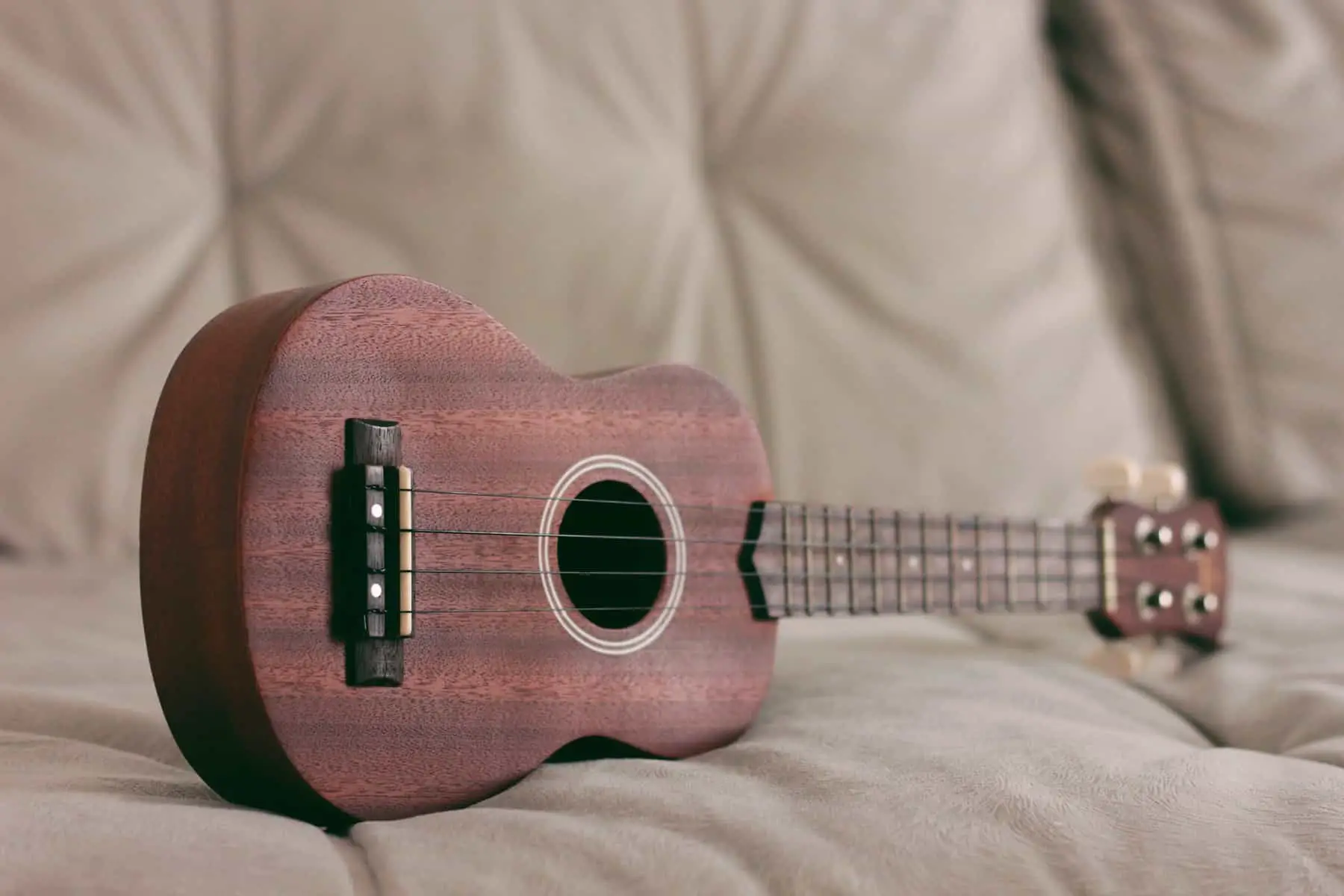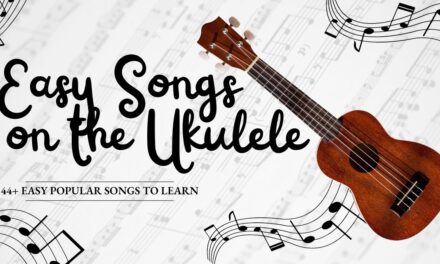Both the mandolin and the ukulele are small instruments that share similar shapes and sizes – yet they are vastly different in how they are played and the tones they produce. We will begin to cover the differences between these wonderful instruments and explore which one might be the right choice for you to play.
Mandolin vs Ukulele: Which One Is Better to Play?
Popular instruments like the mandolin and ukulele each have their own unique tone and approach to playing. The choice between the two is often a matter of taste, but also of the music one wishes to perform and one’s own level of proficiency.
While ukuleles are commonly linked with Hawaiian and island music, mandolins are more commonly connected with folk and bluegrass. Both instruments, however, are adaptable enough to be employed in a wide range of musical styles.
The sound of a mandolin is louder and sharper than that of a ukulele, which is lower and warmer. The mandolin’s steel strings, hollow body, and rounded back allow sound to resonate, producing its distinctive tone. Contrarily, the ukulele’s tiny body, nylon strings, and flat back allow for a more personal tone.
The mandolin is a more difficult instrument to play in terms of technique. There are eight strings on it, in four groups of two, and the player must employ both plucking and strumming to produce music. In contrast, the ukulele is a stringed instrument that has only four nylon strings and is often played with straightforward chord progressions and strumming patterns.
Compared to other instruments, the ukulele is easier to pick up for newcomers. It’s easier to pick up the basics of playing songs on it because of its smaller size and less complex chord structures. But the mandolin calls for stronger fingers and greater dexterity to play. Both instruments, however, may be mastered with time and effort.
In the end, it’s up to you and the kind of music you want to play to determine which of these stringed instruments is right for you.
The mandolin, with its steel strings, is a good option if you want a brighter, more intricate tone and are ready to put in the time and effort to master a more difficult instrument. The ukulele is a great option if you want a gentler, more soothing tone and a less complicated instrument to learn.
Are Ukulele and Mandolin Chords the Same
Beginners often wonder if they can use the same chords on a mandolin or ukulele. In spite of the fact that the two instruments share a few common chord shapes, they are fundamentally different due to variances in finger positioning and chord voicing.
Two or three fingers are used to fret mandolin chords, while the other fingers are used to press down on the strings. Strength and dexterity of the fingers are essential for this technique. Arpeggios are another common way for mandolinists to play chords, which involve picking individual notes from the chord rather than strumming them.
Ukulele chord shapes, on the other hand, are often played with only one or two fingers on the fretboard, making them ideal for beginners. As a result, ukulele chords are commonly strummed simultaneously to create a broad, lush sound.
Tuning is a major distinction between ukulele and mandolin chords. A mandolin’s standard tuning is a fifth, while a ukulele is a fourth, as was explained earlier. This implies that even while the visual appearance of some chord shapes across the two instruments may be similar, the actual fret positions where they are performed are different.
Can the mandolin and the ukulele be tuned the same?
Beginners who are beginning to play the mandolin or ukulele may wonder whether the two instruments can be tuned in the same manner. Technically, it is conceivable to tune two instruments to the same notes as they are both fretted instruments, although it is not standard practice to do so.
Mandolins are commonly tuned in fifths, with each string in the key of G set to a specific note. G-D-A-E is a common description of the mandolin’s tuning, with the G string being the lowest and the E string being the highest.
Ukuleles, on the other hand, are commonly tuned in fourths with the notes G-C-E-A. This is the most popular tuning for the ukulele and is commonly referred to as “standard tuning.”
Although it is feasible to tune a mandolin to the same notes as a ukulele, doing so would entail changing the tuning of each individual string, which can be time-consuming and may result in a sound that is less than perfect. However, since the two instruments have distinct playing techniques and sonic qualities, there may be little benefit to tuning them similarly.
String Notes and Tuning
Mandolin and ukulele differ significantly in their string positioning and tune. Knowing these distinctions can help you comprehend the distinctive characteristics of each instrument and make an informed decision about which to learn.
One of the major differences one might notice immediately is the style of strings used for each instrument. The mandolin uses steel strings while the ukulele uses nylon strings – with each having its own benefits and producing a different tone. While the ukulele has four strings, the mandolin has 4 “sets” of strings.
Typically, mandolins have eight strings, grouped in pairs of two, tuned in fifths. The string notes on a mandolin are G-D-A-E, with the lowest note being G and the highest note being E. Except for the uppermost pair, which is tuned an octave apart, all pairs of strings are tuned to the same pitch.
Ukuleles, on the other hand, typically have four strings and are tuned in fourths. A ukulele’s string notes are G-C-E-A, with the G string being the lowest and the A string the highest. The ukulele’s tuning is frequently referred to as “standard tuning.”
The string positioning and tuning of these instruments have a substantial effect on their tone and playing style. The mandolin’s tuning in fifths allows for complicated melodies and chord progressions, whereas the ukulele’s tuning in fourths gives it a bright, joyful sound that is well-suited for strumming and basic chord progressions.
Knowing the differences between the mandolin and ukulele in terms of string notes and tuning will help you select the instrument that best suits your tastes and playing style. Whether you choose the intricate melodies of the mandolin or the upbeat strumming of the ukulele, both instruments offer a distinctive and enjoyable playing experience.
Different Sizes
Mandolins and ukuleles are available in a range of sizes, each with a distinct sound and playing style. Knowing the size variations between these instruments might assist you in selecting the one that best suits your preferences and playing style.
Mandolins are typically larger than ukuleles and are available in a variety of sizes, ranging from “mandolinettes” to “mandocellos.” The “F-style” or “A-style” mandolin, which is around 27 inches in length, is the most common mandolin size. The larger size of the mandolin permits a deeper, more robust sound and more intricate playing skills.
In contrast, ukuleles are typically smaller than mandolins and are available in four sizes: soprano, concert, tenor, and baritone. The soprano ukulele is the smallest and most common instrument, measuring approximately 21 inches in length. The larger sizes of the ukulele, such as the tenor and baritone, have a deeper tone and are typically employed for more difficult playing skills.
Size has a considerable effect on the sound and playability of these instruments. Smaller instruments, such as the soprano ukulele, are typically easier for beginners to play and have a brighter, more upbeat tone. Bigger instruments, such as the mandolin, produce a deeper, more resonant sound and are frequently preferred by more skilled musicians.
Origins of Each Instrument
Knowing the origins of these instruments will allow you to understand their distinctive qualities and cultural significance.
The mandolin is from the lute family and has European origins and was derived from the lute and other related instruments in the 18th century. It rose to prominence during the nineteenth century, particularly in Italy, where it became a mainstay of traditional music and started the lute family group of instruments. Today, the mandolin is utilized in a vast array of musical styles, ranging from bluegrass and folk music to classical and jazz.
In contrast, the origins of the ukulele date back to the late 19th century in Hawaii. Portuguese colonists brought the braguinha, a miniature guitar-like instrument, to Hawaii, where it evolved. In the early 20th century, the ukulele became a mainstay of popular music in the continental United States, where it first gained popularity in Hawaii.
Musical traditions and playing techniques of these instruments reflect their origins. The mandolin is typically connected with European folk and classical music, but the ukulele is intimately associated with Hawaiian music and early 20th-century popular music.
Knowing the origins of these instruments will allow you to understand their distinctive qualities and cultural significance. Whether you are attracted to the mandolin’s rich history and heritage or the ukulele’s bright, carefree spirit, both instruments offer a distinctive and satisfying playing experience.
Playing Style
Although both the mandolin and ukulele are stringed instruments, they are played differently and need different methods. Knowing the varied playing styles and approaches utilized for these instruments will allow you to more easily master them and get the desired tone.
Typically, the mandolin is played with a pick or plectrum and the tremolo method on metal strings, which includes rapidly picking the strings to produce a sustained, ringing sound. In addition to chords, arpeggios, and other methods, the mandolin can be played in a number of musical genres and tones.
Typically, the ukulele is played by combining strumming and picking techniques. Picking involves plucking the strings to generate a melody or solo, and strumming involves brushing the strings with the fingers or a pick to produce a rhythmic sound. The ukulele can also be played using fingerstyle techniques, which include plucking the strings in a certain pattern with the fingers.
Mastering the mandolin and ukulele requires practice and perseverance, but each instrument offers a distinctive and gratifying playing experience. Whether you choose the rapid-fire tremolo of the mandolin or the upbeat strumming of the ukulele, there are playing styles and techniques that can help you attain the desired sound.
When it comes to music genres, the mandolin is most often found in bluegrass and folk music while the ukulele is found in traditional Hawaiian music. Although these are the most common styles to find each instrument, they are both extremely versatile and can be found across a wide range of musical styles including classical, rock, and jazz.
Both can be considered to be “guitar like string instruments” since they can both be strummed and make great sing-along instruments.
Example of a Mandolin
Example of a Ukulele
Ukulele vs Mandolin: Which One Should You Learn?
The choice between learning the ukulele or the mandolin ultimately depends on personal preference and musical objectives.
Both instruments offer distinctive playing sensations and are applicable to a number of musical styles. Consider aspects such as the tone and style of music you wish to play, the instrument’s physical size and shape, and the level of difficulty you are willing to accept.
No matter which instrument you select, learning to play the ukulele or mandolin can be a joyful and gratifying experience.
Frequently Asked Questions on Ukuleles vs. Mandolins
If I already play the ukulele, how hard is it to learn the mandolin?
There are several similarities between the mandolin and the ukulele, so learning the mandolin may be easier if you already play the ukulele. Usually, musicians familiar with an instrument have an easier time picking up a different stringed instrument vs. a complete beginner.
What is the sound difference between a mandolin and a ukulele?
The sound of the mandolin is brighter and more metallic than that of the ukulele, which is warmer and gentler.
Which is easier to learn, the ukulele, or the mandolin?
Due to its smaller size and simpler chord forms, the ukulele is easier to learn for many individuals, but this ultimately relies on personal preferences and objectives.
Which is easier to play, mandolin or ukulele?
Again, this ultimately depends on personal preferences and musical aspirations, although the ukulele’s smaller size and simpler chord forms may make it easier for some individuals to play.
Can you string a mandolin the same as a ukulele?
No, mandolins and ukuleles have a different number of strings and are tuned differently; therefore, they require different types of strings.
Are mandolin chords the same as ukulele chords?
No, mandolin and ukulele chords are distinct because the instruments are tuned differently.
Is it difficult to learn the mandolin?
Mandolin instruction can be difficult because it demands learning new methods and chord shapes, but it can also be rewarding.
Do you play the mandolin like the ukulele?
No, the playing styles of the mandolin and ukulele are distinct and require separate skills.
What kind of music can be played on a mandolin?
Bluegrass, folk, classical, jazz, and even rock music can all be performed on the mandolin.





![Best Professional Alto Saxophones [2023 Review]](https://instrumentful.com/wp-content/uploads/2023/08/best-alto-saxophones-cover-440x264.jpg)


